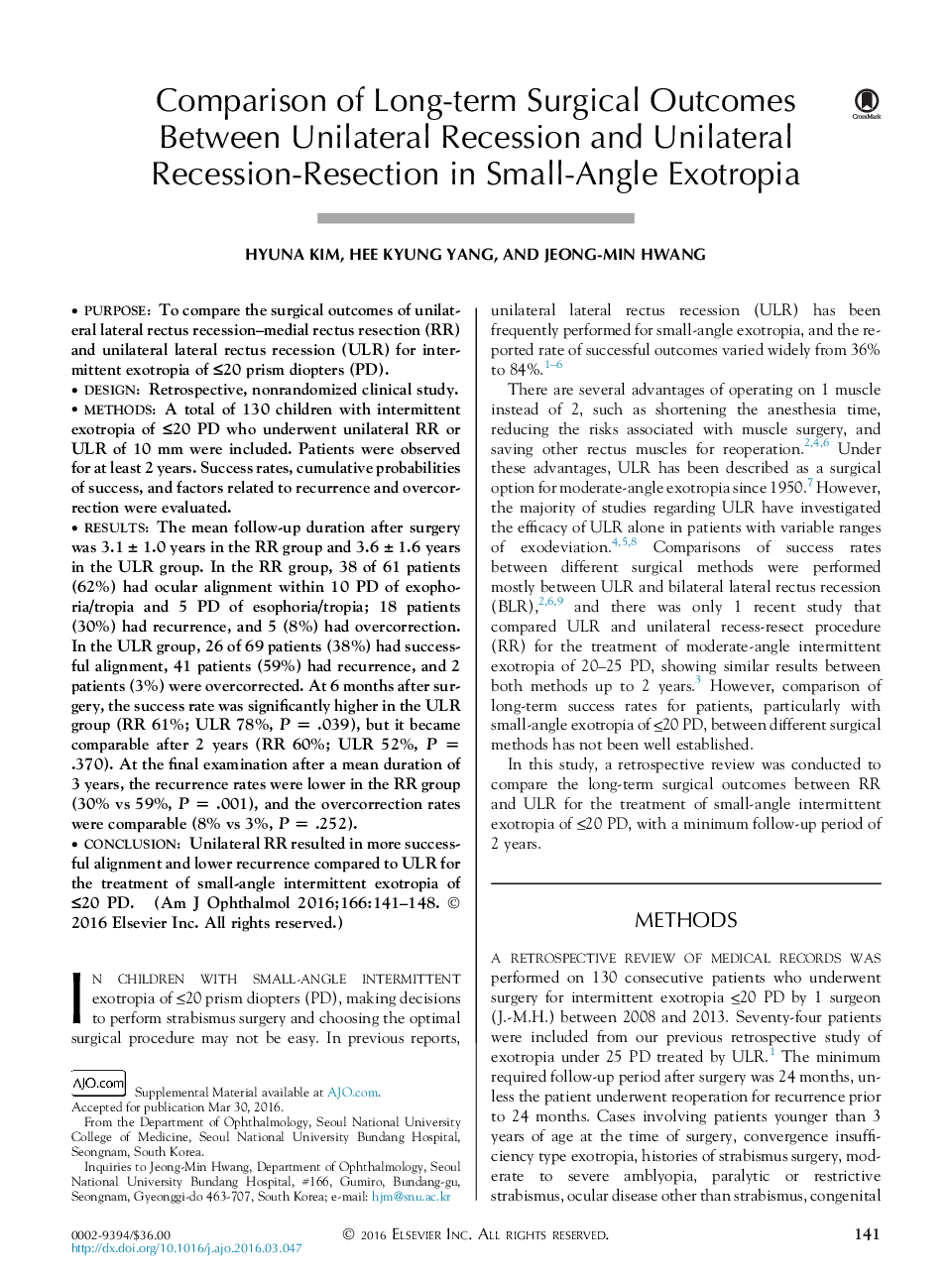| Article ID | Journal | Published Year | Pages | File Type |
|---|---|---|---|---|
| 6194811 | American Journal of Ophthalmology | 2016 | 8 Pages |
PurposeTo compare the surgical outcomes of unilateral lateral rectus recession-medial rectus resection (RR) and unilateral lateral rectus recession (ULR) for intermittent exotropia of â¤20 prism diopters (PD).DesignRetrospective, nonrandomized clinical study.MethodsA total of 130 children with intermittent exotropia of â¤20 PD who underwent unilateral RR or ULR of 10 mm were included. Patients were observed for at least 2 years. Success rates, cumulative probabilities of success, and factors related to recurrence and overcorrection were evaluated.ResultsThe mean follow-up duration after surgery was 3.1 ± 1.0 years in the RR group and 3.6 ± 1.6 years in the ULR group. In the RR group, 38 of 61 patients (62%) had ocular alignment within 10 PD of exophoria/tropia and 5 PD of esophoria/tropia; 18 patients (30%) had recurrence, and 5 (8%) had overcorrection. In the ULR group, 26 of 69 patients (38%) had successful alignment, 41 patients (59%) had recurrence, and 2 patients (3%) were overcorrected. At 6 months after surgery, the success rate was significantly higher in the ULR group (RR 61%; ULR 78%, P = .039), but it became comparable after 2 years (RR 60%; ULR 52%, P = .370). At the final examination after a mean duration of 3 years, the recurrence rates were lower in the RR group (30% vs 59%, P = .001), and the overcorrection rates were comparable (8% vs 3%, P = .252).ConclusionUnilateral RR resulted in more successful alignment and lower recurrence compared to ULR for the treatment of small-angle intermittent exotropia of â¤20 PD.
